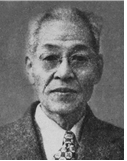Bang Sa-gyeom (July 25, 1881 – December 8, 1955) was born in Pyongyang and emigrated to Hawaii in 1903 at the age of 23. Amid the grueling labor on sugarcane plantations, he dreamed of a better future and eventually moved to San Francisco to pursue his studies. There, he met Ahn Chang-ho and became involved in the Korean independence movement, dedicating his life to both activism and business while leaving behind a valuable record of his journey.
The Independence Movement
In 1905, Bang co-founded the Daedong Educational Association with Jang Kyung, launching educational and independence activities for Korean immigrants. He later organized regional chapters in San Francisco, Sacramento, and other cities, working to unite the Korean community. As more Koreans moved from Hawaii to the U.S. mainland, the Daedong Educational Association evolved into the Daedong Boguk Association. Bang contributed to strengthening the organization by serving as a patrol officer.
In 1908, when Jang In-hwan and Jeon Myeong-un assassinated pro-Japanese diplomat Durham Stevens, Bang actively advocated for the unification of independence groups, urging the merger of the Gongnip Association and the Daedong Boguk Association. This effort culminated in the 1909 unification of the Gongnip Association and the Hapseong Association into the Korean National Association (KNA). In 1910, the Daedong Boguk Association merged with the KNA, further consolidating the independence movement.
Bang later founded the Korean Independence Research Society in Chicago, serving as its secretary. He also contributed to raising national consciousness among Korean immigrants by publishing editorials in Shinhan Minbo and Bukmi Sibo in 1931 and 1944. Throughout his life, he raised funds for the independence movement and supported Syngman Rhee. In recognition of his contributions, he was posthumously awarded the Order of Merit for National Foundation in 2011.
Business and Family
Bang funded his independence activities through ginseng trading. After completing his studies in Chicago, he collaborated with Jang Kyung to sell ginseng in the South Pacific and Australia, even traveling as far as Cuba. He later established a successful chop suey wholesale business in Missouri, securing financial stability. As part of this effort, he also ran a Chinese-style restaurant, ensuring the education of his ten children.
In 1916, Bang married Bang Salome through a photograph-based matchmaking process. At 18, she had traveled from Gando to Hoeryong to take a picture, which she sent to the 35-year-old bachelor Bang. Although Japanese authorities initially blocked her entry into the U.S., Bang waited for a year at the San Francisco pier until she was finally allowed to join him. The couple settled in Northern California, first in Sacramento and later in Stockton, where they expanded their business by managing hotels and restaurants. They also purchased 83 acres of farmland for rice cultivation, but severe floods and a rice price crash led to major financial losses. Nonetheless, Bang successfully rebuilt his fortune by running restaurants for another 20 years.
Later Years and Legacy
In 1950, Bang relocated from St. Louis to Los Angeles. He was overjoyed when Syngman Rhee, whom he had long supported, became South Korea’s first president and even visited Korea. However, he grew deeply disheartened as he witnessed political corruption unfold in the new government.
During the last three years of his life, he dedicated himself to writing a diary documenting half a century of Korean immigrant history in the U.S. His records spanned seven notebooks, chronicling the struggles and achievements of Korean Americans. In 2006, the Independence Hall of Korea published his diaries as The Collection of Historical Materials on the Korean Independence Movement, Vol. 21, recognizing his contributions. In a 1977 interview, his wife, Bang Salome, recalled, “For 40 years, my husband considered it an honor to run businesses in the U.S. and donate to the independence movement.”
On December 8, 1955, Bang passed away in Los Angeles at the age of 75 and was laid to rest at Rosedale Cemetery. Among his ten children, his third son, Young Bahng, continued the family legacy in Pasadena. Bang Sa-gyeom’s life, dedicated to both the independence movement and business, remains an important chapter in the history of Korean immigration to the United States.

Leave a Reply